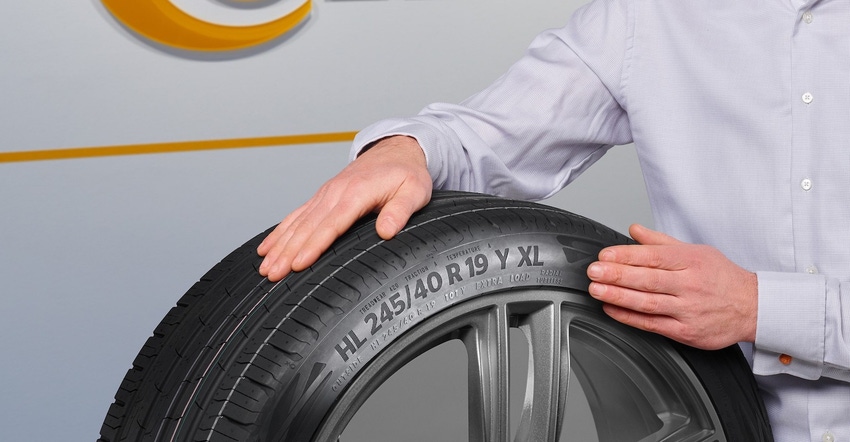Continental has created specialized tires to meet EVs’ unique demands.

Battery electric vehicles are heavier than traditional combustion-powered cars because their battery pack is quite heavy. The lithium-ion pack in a Tesla Model S, for example, weighs 1,200 lbs.
Carmakers place this mass low in the car to keep the center of gravity low, but the mass is still there and must be supported by the car’s tires. With that challenge in mind, Continental has launched the first line of EV-optimized tires built to the new HL load index code, which adds nearly 25 percent to the tires’ load-carrying capacity compared to standard-load SL tires. The HL code also specifies a 10 percent capacity increase beyond that of XL code tires, which were the previous high-load champs.
To achieve this, Continental had to thoroughly rework the design of the tire. “In terms of construction, we reinforced the bead and enhanced the contour of the tire to reduce tire/road noise,” reported Dr. Stefan Habicht, who was in charge of the development project for these tires. “At the same time, we also optimized the pattern compound. As a result, we were able to achieve low rolling resistance, ensure precision handling and keep mileage at its customary high level.”
To get more information on this development, Design News put in a call to Andreas Schlenke, Head of Technical Benchmark & Customer Interfaces Worldwide for Continental.
Design News: What are the different requirements for EV tires?
Andreas Schlenke: We have some tires in our range that are particularly suitable for this new type of drive and supply them to vehicle manufacturers as well as tire dealers and workshops / car dealerships. From the outside, you can't really tell the difference. The profile and sidewall design, as well as the information on the sidewall, are similar to those of the conventional models.
For sure, lowest possible rolling resistance and low tire-road noise are important, since especially electric drivetrains do not create any noise. However, passenger cars and commercial vehicles with electric drives are usually heavier than similar vehicles with internal combustion engines, as the necessary batteries weigh significantly more than a full fuel tank.
|
DN: How does Continental address those different requirements?
Andreas Schlenke: The higher weight is absorbed by a more load-bearing construction of the carcass; most of the tires bear the XL symbol to indicate this. This is also evident in the tires' increased load index. Within the industry, there is a new load capacity standard called "HLC" (High Load Capacity), which has a load capacity around 25 percent higher than standard tires.
We are currently producing the first tires to this standard for larger e-vehicles. Modifications to the tread design and tread compound will be necessary to keep abrasion relatively low. Low tire-road noise can be achieved by using a type of foam layer inside the tire; this technology of ours is called ContiSilent technology.
DN: Are there new or emerging technologies that help with this challenge, and what are they?
Andreas Schlenke: Very low rolling resistance is made possible by the tread compound, tread design and construction, especially of the sidewall, and by keeping the overall weight as low as possible. All these measures must be precisely coordinated to ensure that safe driving characteristics remain at a high level. Continental is currently producing the first tires to the new HL standard for OE fitments, but they will also be available on the replacement market.
DN: What are the tradeoffs necessary when creating an EV-specific tire, such as cost, weight, or other parameters?
Andreas Schlenke: Basically, it comes down to balancing the performance characteristics despite a simultaneous reduction in rolling resistance. A typical conflict of objectives in tire development, for example, is between low rolling resistance and safe driving characteristics on wet roads. Here, many components in tire development must be optimized to reduce such and other conflicting goals. For us, it is generally a very important goal to offer the highest possible level of safety and therefore not to make any compromises in tire development at the expense of driving safety.
About the Author(s)
You May Also Like






